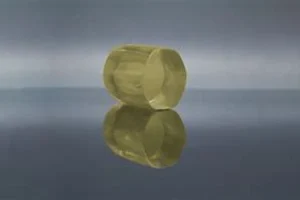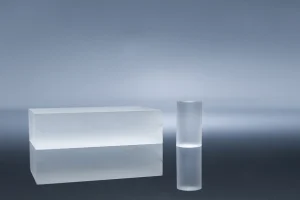Introduction
Scintillation detectors have long been pivotal in the detection of radiation, offering unique advantages in terms of sensitivity and precision. One of the latest advancements in this domain is the application of CeF3 (Cerium Fluoride) crystals. In this comprehensive guide, we dive deep into understanding how CeF3 is redefining the scope of scintillation detectors.
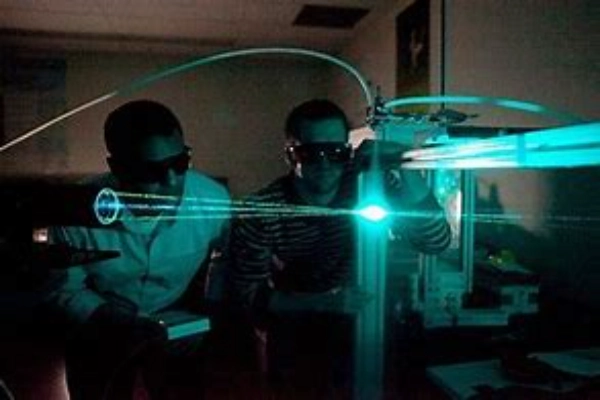
The Core Material
CeF3, known by its chemical name as Cerium Fluoride, stands out in the vast realm of inorganic materials due to its distinctive properties. Notably, its crystalline structure is derived from a blend of cerium – a member of the rare earth elements group – and fluorine. This composition results in a crystal known for its unique luminescence, an aspect that is crucial in the field of radiation detection.
Now, when we delve deeper into the reasons behind the rising significance in scintillation, several key attributes come to light. One of the most salient properties is its incredibly fast decay time. This attribute ensures that the material can respond to radiation almost instantaneously. Imagine a scenario where timely detection is critical; CeF3’s responsiveness ensures that every second counts.
Complementing its rapid decay time is the material’s high light yield. This essentially means that the crystal can produce an elevated amount of light in response to the radiation it absorbs. In layman’s terms, it’s akin to having a brighter flashlight in a dark room, ensuring that nothing goes unnoticed. The brighter the response, the clearer and more precise is the detection, making CeF3 a valuable asset in sensitive radiation detection scenarios.
Reflecting upon the history of scintillation detectors, traditional models, while effective in their own right, were plagued by certain limitations. They often lacked in terms of responsiveness, efficiency, and overall stability. However, the introduction of CeF3 crystals has marked a significant turning point. By effectively addressing the challenges that its predecessors faced, CeF3 is not only bridging gaps but also paving the way for more advanced and reliable radiation detection techniques in the future.
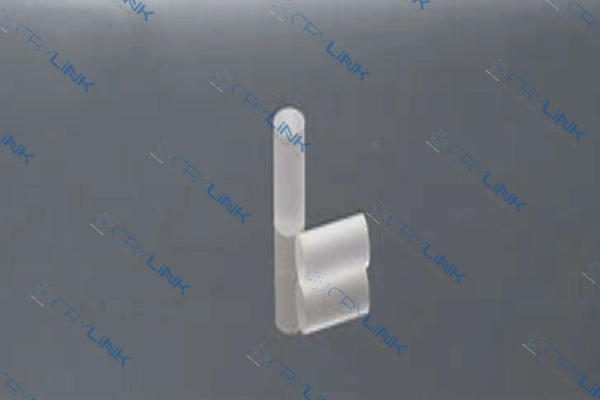
Benefits of Using CeF3 Crystals
The introduction and subsequent rise in the use of CeF3 crystals in the realm of radiation detection is hardly serendipitous. There are very tangible benefits that these crystals offer, setting them a cut above the rest. Let’s delve deeper into these advantages.
Firstly, the sensitivity of radiation detectors is paramount. When one is dealing with radiation, there’s no room for inaccuracies. Every bit of radiation, no matter how minimal, must be picked up and accurately read. With CeF3’s high light yield, this has become not just possible, but the standard. The luminous intensity it produces in response to absorbed radiation is a testament to its impeccable sensitivity. This elevated response ensures that even the faintest of radiation levels, which could easily go undetected using other materials, are promptly recognized. Such heightened sensitivity is invaluable, especially in critical environments where the stakes are high, and there is zero margin for error.
Moving on to response time, the speed at which radiation is detected can sometimes mean the difference between timely intervention and a missed opportunity. CeF3 boasts a swift decay time, a property that propels it to the forefront of radiation detection technologies. Its ability to capture and relay radiation data almost in real-time can be equated to an emergency responder’s swift reaction to a distress call. The instantaneous feedback ensures that any necessary actions or decisions based on the detected radiation can be made without delay, thereby optimizing the effectiveness of any subsequent processes or interventions.
Lastly, the durability and longevity of the material in use cannot be compromised, especially when longevity directly impacts functionality and overall cost-efficiency. While many materials might show promise in terms of sensitivity and response time, they often fall short when exposed to radiation over extended periods. Such materials can degrade, losing their efficacy over time. CeF3, however, stands out in this regard. Its inherent resistance to radiation-induced damage not only means that detectors remain functional for longer but also translates to reduced maintenance costs and less frequent replacements. This enduring nature of CeF3 not only speaks to its physical robustness but also positions it as an economically viable choice in the long run.
In essence, CeF3 crystals encapsulate the trinity of attributes essential for advanced radiation detection: unparalleled sensitivity, rapid response, and enduring durability. It’s a convergence of these traits that positions CeF3 as a material of choice for modern-day scintillation detectors.
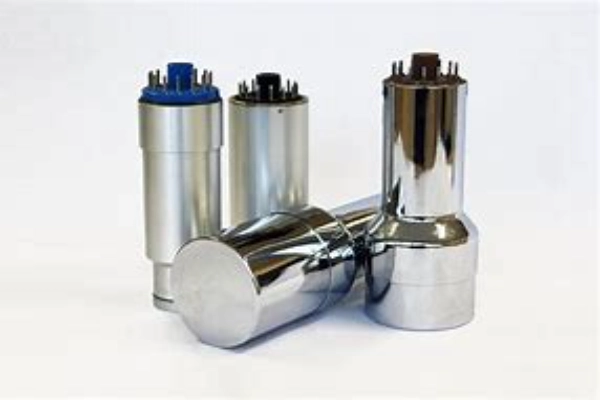
Applications of CeF3 in Modern-Day Scenarios
In an age marked by technological leaps and an ever-increasing demand for precision, the role of CeF3-based scintillation detectors is becoming increasingly indispensable across various sectors. The unique attributes of CeF3 are being harnessed to serve a multitude of applications in contemporary scenarios.
Within the healthcare sector, the need for more accurate and clear imaging systems is perpetual. Medical professionals and patients alike benefit from clearer images as they lead to more accurate diagnostics, which, in turn, dictates the course of treatment. CeF3-based scintillation detectors have emerged as an answer to this demand. The crystals’ high light yield translates to images of a higher resolution and clarity, a factor that’s crucial when diagnosing complex medical conditions. Whether it’s detecting a minuscule tumor or mapping neural activities, CeF3 detectors ensure that medical professionals have the sharpest visual data at their disposal.
Transitioning to the realm of security, the importance of efficient and reliable screening systems can’t be overstated. As global travel intensifies and security threats evolve, screening systems at checkpoints, be it at airports or borders, need to be both fast and foolproof. CeF3 detectors, with their rapid decay time, enable almost real-time detection of radioactive materials. This swift detection is crucial in preventing potential threats, especially in high-traffic zones. A suitcase passing through an airport conveyor belt or a vehicle at a border crossing can be promptly scanned, and any radioactive anomalies can be detected with pinpoint accuracy, thanks to the sensitivity offered by CeF3.
Finally, the field of research and development, a domain marked by meticulousness and the constant quest for knowledge, greatly benefits from CeF3-based detectors. Research institutions, ranging from nuclear physics labs to space research centers, rely on accurate radiation readings to validate their hypotheses or to chart out new territories of knowledge. The precision of CeF3 detectors ensures that no nuance is missed. For instance, in particle physics experiments, where understanding the behavior of subatomic particles is pivotal, the sharp readings from CeF3 detectors can provide invaluable insights.
In each of these applications, the underlying theme remains consistent: the need for accuracy, speed, and reliability. CeF3, with its unique set of properties, seamlessly fits into these modern-day demands, making its presence felt across sectors and solidifying its position as a material of the future.

Comparing CeF3 with Traditional Scintillators
The landscape of radiation detection has undergone a significant transformation with the introduction of CeF3 scintillators. As with any technological evolution, there’s a compelling need to evaluate the new against the old, to truly grasp the magnitude of the advancements made.
Traditional scintillators have, for a long time, played an instrumental role in radiation detection. However, as we venture deeper into the intricacies of both, some key differences emerge that accentuate the supremacy of CeF3.
One of the standout features of CeF3 is its efficiency. Radiation detection hinges on the principle of converting absorbed radiation into visible light, and the brilliance with which a material accomplishes this directly influences its efficiency. With its high light yield, CeF3 doesn’t just match but significantly surpasses its predecessors. This elevated light output ensures that even the minutest radiation levels are registered, making the process far more accurate and reliable.
The realm of radiation detection often requires instantaneous results. Traditional scintillators did provide results, but there was a latent period. CeF3 revolutionized this with its remarkably quick decay time. This means that the time lag between radiation absorption and its conversion to light is minimal, allowing for real-time, or nearly real-time, feedback. Such swiftness is invaluable, especially in situations that demand immediate responses, like medical emergencies or security checks.
Lastly, stability is a criterion where CeF3 distinctly sets itself apart. Many traditional scintillators had hygroscopic tendencies, meaning they absorbed moisture from the environment. This could lead to degradation of the crystal over time, affecting its performance. CeF3, on the other hand, is non-hygroscopic. Its resilience against varied environmental conditions ensures that its efficiency and effectiveness remain uncompromised, thereby extending its functional lifespan.
In essence, while traditional scintillators laid the foundation, CeF3 has built upon it, bringing in enhancements that make radiation detection more precise, swift, and steadfast.

The Future of Scintillation Detectors with CeF3
The integration of CeF3 in scintillation detectors is not just a fleeting trend. Its advantages and the resulting improvements in radiation detection make it the material of choice for future innovations.
Conclusion
CeF3 is undeniably revolutionizing the domain of scintillation detectors. Its superior properties and versatile applications, spanning from medical imaging to security screening, position it as the frontrunner in radiation detection technologies. As technology advances, CeF3’s role will only become more pivotal, promising a brighter, safer, and more precise future.
FAQs
- What is the primary composition of CeF3 crystals?
CeF3, or Cerium Fluoride, is a combination of cerium, a rare earth element, with fluorine. - Why is the fast decay time of CeF3 crucial in radiation detection?
A fast decay time ensures that radiation is detected almost immediately, facilitating rapid and accurate readings. - How does CeF3 enhance the sensitivity of scintillation detectors?
Thanks to its high light yield, CeF3 improves the detector’s ability to identify even minute radiation levels with precision. - In which industries is the application of CeF3-based scintillation detectors most prominent?
The healthcare industry for medical imaging, security sectors for screening, and research institutions are some of the key areas benefiting from CeF3 detectors. - How do CeF3 detectors compare with traditional scintillators in terms of efficiency?
CeF3 offers a higher light yield, making it more efficient than many traditional scintillators.



